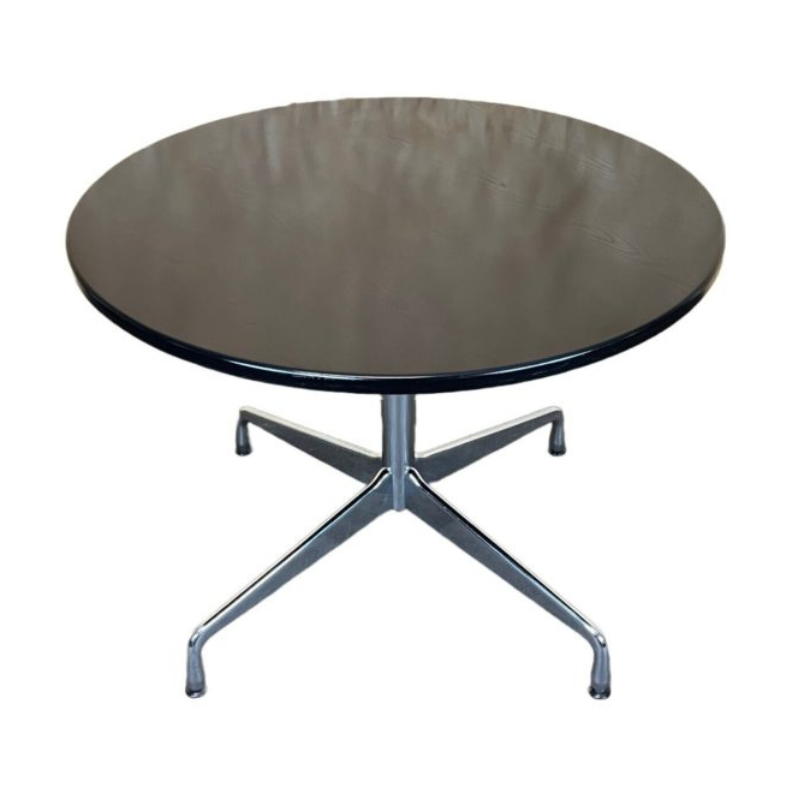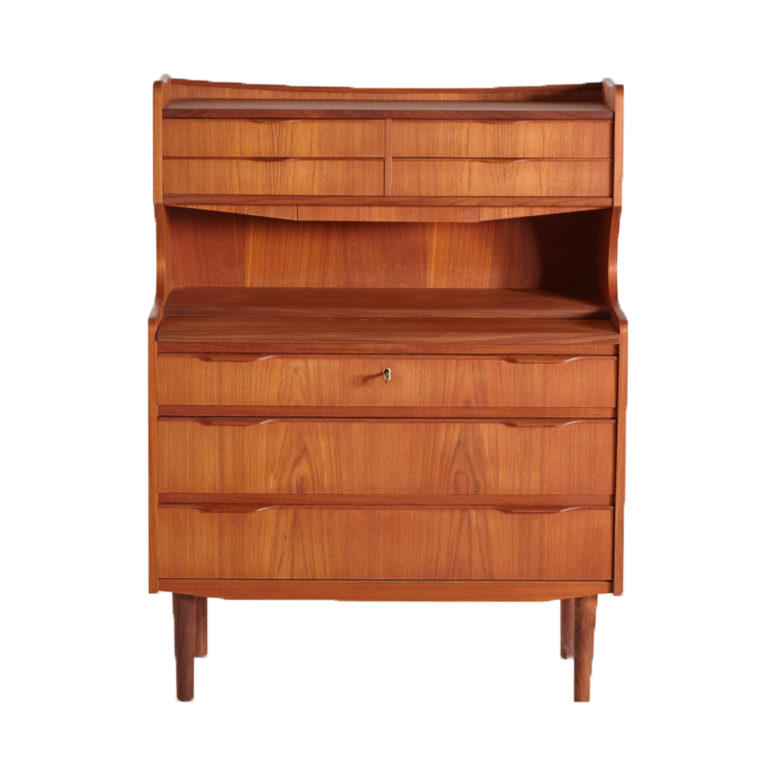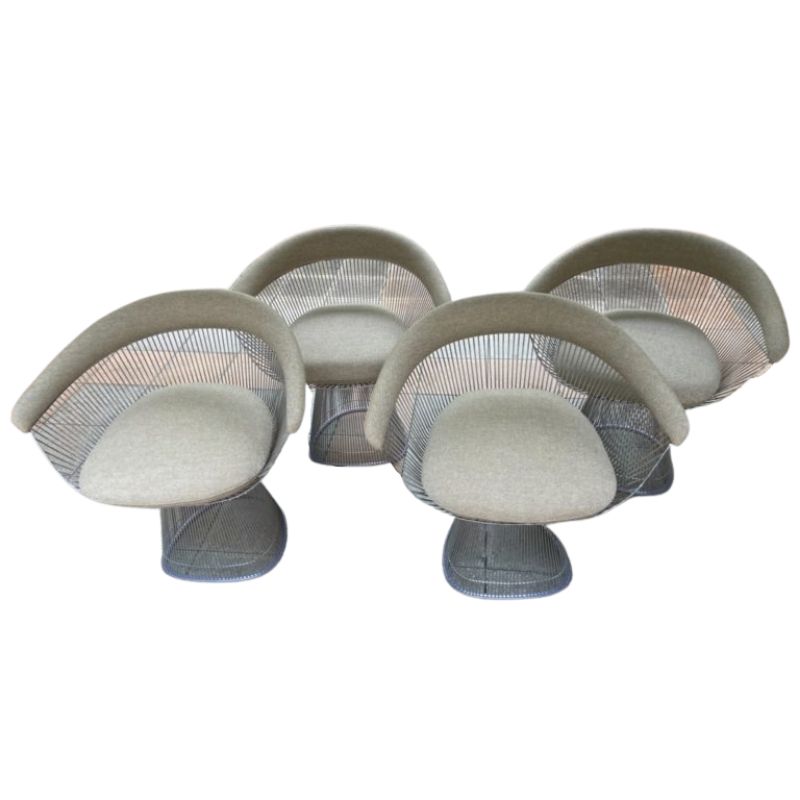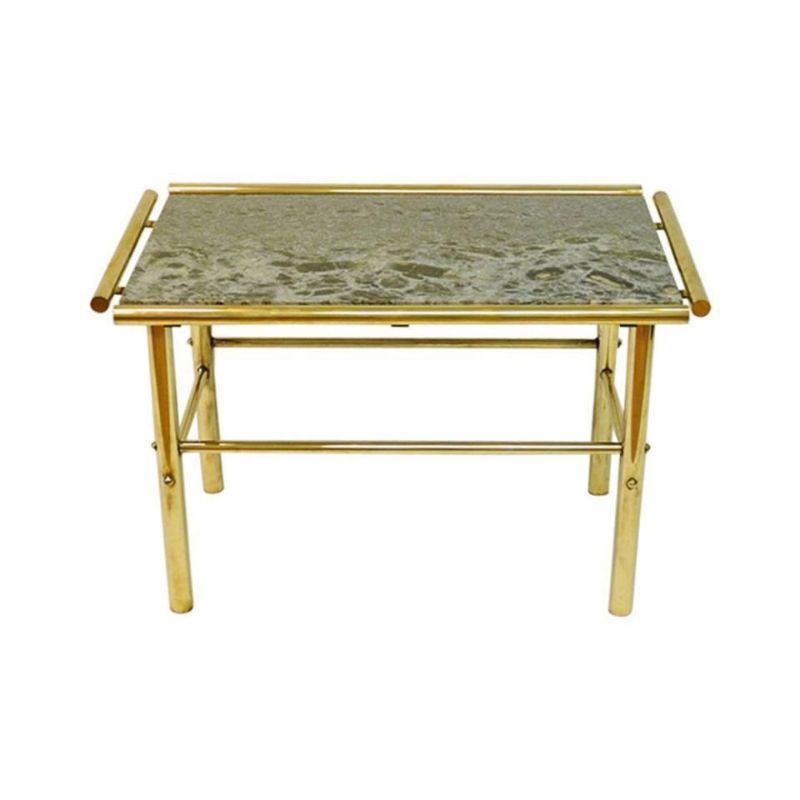the last detail... A vs B
There is some conversation here and I think it's an important issue. So let me elucidate my opinion. The first design I designate version A.
It is what the mind wants this object to be. It's the natural evolution of a concept. Perfect geometry, simple, rigid. To my EYE that creates a problem. It IS the correct intellectual evolution of the concept, but it stumbles when it meets my eye. Instead of absorbing the whole form it gets distracted by the perfection, the absolute geometric correctness of the form. It's like the issue with creating a complex curve on paper that looks natural to the eye. The most recent version I call B.
It holds the perfect geometry on the top, but emerges from a base where the geometry has been relaxed a bit (maybe a bit too much). My first sight of it is not distracted by blazingly precise geometry.
I see the complete object and THEN I notice the geometric concepts from whence this design emerged.
I find the perfect geometry of version A a wee bit harsh and hard edged. I prefer B but perhaps a little less "relaxed".
But then what the frick do I know, I've designed lets see now 1 table and 1 dog fence. Hmmm not an impressive track record. This is the sort of detail I think we need input from the professional about???
the next step
I think the version B is an evolution of the version A. So version B is better than version A. I suggest for the next step, to make the small one with the same little edge radius and same thickness than the version B (because I kept the same small one than the firts black version) to make the family aspect more present. For my part, it is just these little details on the small one that bugs me.
I'm not sure if Koens stated...
I'm not sure if Koens stated anything about this, but which is easier or cheaper to produce? If they will cost an equal amount of time/money to make I prefer the second version, but if one is markedly cheaper to make than the other I think the cheaper one should be produced.
Let me first answer HP
As shown before in a rather crude schematic way there is an advantage in keeping the base hexagonal, but...one can also reduce the diameter slightly and that would make it fir into the same kiln filling pattern.
On the shape, I agree very much with dcwilson's analysis, but...it lead me to the opposite choice. Generally speaking I try to make products as obvious and "readable" as possible but this is a vase and a vase is somehow part of the ritual that we know so well which is to bring flowers inside to celebrate an occasion or just to celebrate the beauty of the flowers and the joy that comes with seeing and smellig them. I think that in that context a certain irregularity is very appropriate. I also think that this vase is not an objet that will appeal to a very large number of people. The story behind it and the users it is designed for are sophisticated people and I think that most of them will enjoy the complexity behind it. I am not sure what you mean Amiel with your comment. It sounds as if you consider that the second one in chronological order is an improuvement...I am not sure that the cronological order has anything to do with it.
It sounds like a fairly...
It sounds like a fairly minor compromise, do what needs to be done.
I'd say though that since the design was never concieved as being solely functional in a physical sense (even from Patricks first conception) that a little bit of dramatic emebellishment is quite appropriate and is difficult to argue against for such a romantic object.
I feel like Sam Goldwyn talking to Ernst Lubitsch here...
Ah, you artsy fartsy kraut. Whaddaya want me tuh do? Make a movie one long hair in Greenwich Village will buy, or do ya want me to make one all the knuckle draggers in Peoria will pay to see three times each? Sheeze. 🙂
Well, old Sam Goldwyn, or whomever owned the studio Lubtisch worked for, was in the end at least vain enough to want to make a great picture, and smart enough to take the advice of someone who knew alot more than he did about how to make a great picture. And I prefer to make the better vase even if I can't quite tell which one it is; that's the designer's function ain't it?
So: if this choice has to made on subtleties, I'm sure as hell going to go along with Koen...and James.
Now, SDR, get me some goddamned short hair on the phone who wants to make me some money. Let's do a vase with a werewolf on it right away to make up for what we're going to lose on this goddamned long hair vase...okay?
Sheeze, whadda these people think...we're made uh money or somethin'?! Go on, get outta here, Lubitsch, make the frigging vase the way you want, but I'm warning you, don't go a penny over budget or you'll never work in this town again. 🙂
evolution
Why not consider that the second one in chronological order is an improuvement? I know that in the creative process we can go forward and sometimes backward and after two step forward ...and return one step backward. But not in this case. I see in the second version a logical evolution of the shape that tend to be a circle. The circle seems for me more stable and in better harmony with the side shape. The hexagonal pattern is to close to a circle to not reach it. Perhaps if we continue the evolution of the concept, the top will deform also to approach a circle. So the challenge in deforming also the top, will be to keep the family aspect with the small one and don't deform it to much and loose the hexagonal edgy look.
Ah, well,
there you have it. Modifying the top isn't going to happen, because the hexagonal "raster" can only be one thing, logically and inevitably. I'm sure Koen has wrestled with this in his mind. That's why I'm in favor of keeping that geometry all the way down. I recognize the boldness (as opposed to smoothness) of the bottom profile, but I think that if the object were held in the hand, and viewed from every angle, the "problem" would be seen to be a phantom -- due perhaps to seeing it in only one view, so far ?
The curious "twist" that occurs partway down the second version is sensuous -- but I just can't buy it. Guess I'm a Bauhausian purist at heart !
SDR U S A
Opposites
Now you see I have absolutely the opposite reaction. To me it evokes some natural growth, vines, ligaments or crystallized magma that you sliced through at the one miraculous point where the cell geometry perfectly aligned. To me that makes the perfection JUST at the top all the more magic and emphemeral.
How's that for hyperbole!
Which begs the question
How will this form be manufactured? My partner (Colonial era Archaeologist) knows the pottery stuff quite well and he's unsure how to make the open hex mesh top in a slip cast mold. Here's one of his favorite Wedgwood & Bentley (sp) pieces. Not my taste...
I assume you make a model in wax or plaster? Any access to a 3D printer or other computer aided modeling/prototyping equipment?
http://www.zcorp.com/
I would love to have the 3D printer...
but I was born slightly to early for these toys....we will have to stick to a sub-contractor.
The model itself can be made in almost any material as long as it is water resistant. The moulds are cast in plaster because of a very specific hydroscopic relationship (allowed by most religions)between plaster and clay. It would take a dcwilson-size contribution to explain the basics of it so please take my word for it.
I can understand that your friend finds it quite difficult to cast. As I have mentioned before at first sight it is actually impossible to cast, but the hexagon shape has a specific geometry that makes it possible. I am tempted to make a few drawings to show how it works but for the time being I would prefer to keep it "undisclosed".
I think I have mentioned this before (I don't dare to read my recent contributions for fear to find that I was the one insulting people..which would be highly inappropriate for a "topical--sensationalist"...anyway, as I said, I think I have mentioned this before but unless we find someone who is willing to make a stereo-litho-model with one of these nice toys, we will do it the old fashion way, by hand.
Hello everybody,
At this...
Hello everybody,
At this stage of the project, one can no longer delay a crucial question: How much? Which would be, according to you, a fair price for the two models (big and small). The production would be limited to 500 items, each will be numbered.
We must make this decision now in order to judge the feasibility of the project and to decide which technologies to use.
Maybe we could also discuss other related subjects, like the marketing and the distribution of the vases.
What are your ideas?
From what you've said Koen...
From what you've said Koen you would like an estimate based on intuitive worth rather than c.20% atop the cost of manufacture? I suppose price depends on the context, I presume the vases will be for sale mostly in gallery style retail shops? I'm not a big retail consumer at all and I would probably never actually buy a vase but from the little I know of selling these luxury items c.US $180.00 would strike me as a fair price.
Marketing and Distribution would have to be done between Koen and Patrick and Alix, I don't think theres much scope for input there as they will know all of the appropriate retailers to contact.
If you need any help, please contact us at – info@designaddict.com









